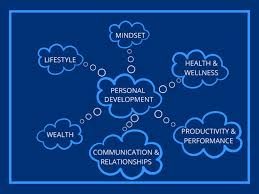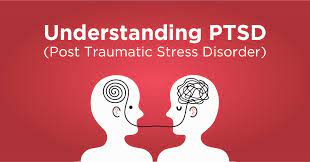Alcohol: Understanding its Effects and Finding Balance
Alcohol has been a part of human culture for centuries. It is often associated with celebrations, socializing, and relaxation. However, it’s important to understand the effects of alcohol on our bodies and minds, as well as the potential risks associated with excessive consumption.
Alcohol is a central nervous system depressant that affects the brain by slowing down its functions. This can result in a range of effects, from decreased inhibitions and relaxation to impaired judgment and coordination. The impact of alcohol varies depending on factors such as the amount consumed, individual tolerance, body weight, and overall health.
While moderate alcohol consumption can be enjoyed responsibly by many individuals, excessive or chronic alcohol use can have serious consequences. Excessive drinking not only affects physical health but also impacts mental well-being and relationships. It can lead to liver damage, heart problems, weakened immune system, increased risk of accidents or injuries, and even addiction.
Recognizing the signs of problematic drinking is crucial. Some common indicators include an inability to control or limit alcohol intake, neglecting responsibilities due to drinking, experiencing withdrawal symptoms when trying to cut back or quit, and continued use despite negative consequences.
If you suspect that you or someone you know may be struggling with alcohol misuse or addiction, seeking help is essential. There are various resources available such as support groups like Alcoholics Anonymous (AA), counseling services specializing in addiction treatment, and medical professionals who can provide guidance on detoxification and rehabilitation programs.
It’s important to remember that everyone’s relationship with alcohol is unique. Some individuals may choose sobriety for personal reasons or due to health concerns. Others may find it helpful to establish healthy boundaries around their alcohol consumption by setting limits or practicing moderation.
If you choose to drink alcohol responsibly, there are steps you can take to minimize potential risks:
- Know your limits: Understand how much alcohol your body can handle without experiencing negative effects. It’s essential to be aware of your tolerance levels and avoid exceeding them.
- Pace yourself: Sip your drink slowly, alternating with non-alcoholic beverages to stay hydrated and reduce the overall amount of alcohol consumed.
- Plan ahead: If you know you’ll be drinking, arrange for a designated driver or consider alternative transportation options to ensure your safety and the safety of others.
- Listen to your body: Pay attention to how alcohol affects you personally. If you start feeling unwell or notice any negative changes in mood or behavior, it may be a sign that it’s time to stop drinking.
- Seek support: If you’re concerned about your alcohol consumption or want assistance in making healthier choices, don’t hesitate to reach out to professionals or support groups who can provide guidance and encouragement.
Remember, the key is finding a balance that works for you. Whether that means abstaining from alcohol altogether or enjoying it responsibly in moderation, prioritizing your well-being is always important.
Commonly Asked Questions About Alcohol and Its Effects
- What is the legal drinking age?
- How can I tell if someone has a drinking problem?
- What are the health risks associated with alcohol consumption?
- How much alcohol is considered safe to drink?
- What are the signs of alcohol addiction or abuse?
What is the legal drinking age?
The legal drinking age varies from country to country. In the United States, the legal drinking age is 21 years old. It is important to note that individual states within the U.S. may have additional regulations or restrictions regarding alcohol consumption, such as specific laws regarding underage drinking or exceptions for certain circumstances (e.g., drinking under parental supervision or for religious purposes). It’s always advisable to familiarize yourself with the specific laws and regulations of your jurisdiction regarding alcohol consumption.
How can I tell if someone has a drinking problem?
Identifying whether someone has a drinking problem can be challenging, as individuals may try to hide or deny their issues with alcohol. However, there are several signs and behaviors that may indicate a potential problem. Here are some common indicators to look out for:
- Increased tolerance: The person needs to consume larger amounts of alcohol to achieve the desired effect or feels less intoxicated by the same amount they used to drink.
- Frequent and excessive consumption: Regularly consuming large quantities of alcohol, often exceeding recommended guidelines or drinking heavily on a daily basis.
- Loss of control: Being unable to limit or stop drinking once they have started, frequently experiencing blackouts or memory lapses related to their drinking episodes.
- Neglecting responsibilities: Prioritizing drinking over other obligations such as work, school, family commitments, or personal relationships.
- Withdrawal symptoms: Experiencing physical or psychological symptoms when attempting to cut back or stop drinking, such as irritability, anxiety, tremors, sweating, nausea, or insomnia.
- Increased secrecy and isolation: Trying to hide their alcohol consumption from others and becoming defensive or evasive when questioned about it. Withdrawing from social activities they used to enjoy in order to drink alone.
- Relationship problems: Experiencing conflicts with family members, friends, or colleagues due to their drinking habits. Engaging in risky behavior while under the influence that negatively affects relationships.
- Decline in physical and mental health: Showing signs of deteriorating health such as weight loss/gain, frequent illnesses, memory problems, mood swings, depression, anxiety disorders, or cognitive impairment.
- Legal issues: Getting into trouble with the law due to drunk driving incidents or other alcohol-related offenses.
- Continued use despite negative consequences: Despite experiencing negative effects on their physical health, relationships, work performance, and overall well-being due to alcohol use, the person continues to drink excessively.
It’s important to note that the presence of one or more of these signs does not necessarily confirm a drinking problem, but they may indicate the need for further evaluation or support. If you suspect someone may have a drinking problem, it’s advisable to approach the topic with empathy and encourage them to seek professional help from addiction specialists, counselors, or support groups like Alcoholics Anonymous (AA).
What are the health risks associated with alcohol consumption?
Excessive or chronic alcohol consumption can have a range of negative health effects. Here are some of the key risks associated with alcohol consumption:
- Liver damage: Alcohol is primarily processed by the liver, and excessive drinking can lead to liver diseases such as fatty liver, alcoholic hepatitis, and cirrhosis. These conditions can cause inflammation, scarring, and impaired liver function.
- Cardiovascular problems: Heavy drinking increases the risk of high blood pressure, heart disease, stroke, and irregular heart rhythms. Prolonged alcohol abuse weakens the heart muscle and disrupts normal heart function.
- Weakened immune system: Alcohol suppresses the immune system, making individuals more susceptible to infections such as pneumonia and other respiratory illnesses. It also impairs wound healing and increases the risk of certain cancers.
- Mental health issues: Alcohol misuse is strongly linked to mental health disorders like depression and anxiety. It can worsen existing mental health conditions or contribute to the development of new ones.
- Increased cancer risk: Long-term alcohol use is associated with an increased risk of various cancers including those of the mouth, throat, esophagus, liver, breast, and colorectal region.
- Impaired cognitive function: Chronic heavy drinking can lead to cognitive impairment and memory problems. It may also increase the risk of developing dementia later in life.
- Nutritional deficiencies: Alcohol interferes with nutrient absorption in the digestive system, leading to deficiencies in essential vitamins and minerals such as vitamin B12, folate, magnesium, and zinc.
- Accidents and injuries: Alcohol impairs judgment, coordination, reaction time, and decision-making abilities which significantly increases the risk of accidents or injuries such as falls or car crashes.
- Addiction and dependency: Regular excessive drinking can lead to alcohol addiction or dependency where individuals experience withdrawal symptoms when trying to quit or cut back on their alcohol consumption.
It’s important to note that the risks associated with alcohol consumption can vary depending on factors such as the amount consumed, frequency of use, individual tolerance, and overall health. It’s always advisable to follow recommended guidelines for moderate alcohol consumption or seek professional advice if you have concerns about your drinking habits.
How much alcohol is considered safe to drink?
The concept of “safe” alcohol consumption can vary depending on individual factors and guidelines set by different health organizations. However, it’s generally recommended to follow the guidelines provided by reputable sources such as the Centers for Disease Control and Prevention (CDC) or the World Health Organization (WHO).
According to the CDC, moderate alcohol consumption is defined as up to one drink per day for women and up to two drinks per day for men. It’s important to note that these guidelines refer to standard drink sizes, which typically contain about 14 grams of pure alcohol. Examples of a standard drink include a 12-ounce beer, a 5-ounce glass of wine, or 1.5 ounces of distilled spirits.
It’s crucial to understand that these guidelines are not meant to encourage drinking but rather provide information on what is considered low-risk or moderate drinking. It’s always important to consider individual health conditions, medications being taken, and personal circumstances when deciding whether or not to consume alcohol.
For certain individuals or specific situations, it may be advised to avoid alcohol altogether. This includes individuals who are pregnant or planning to become pregnant, individuals with certain medical conditions or liver diseases, those taking medications that interact with alcohol, individuals with a history of substance abuse or addiction, and individuals who plan to drive or operate machinery.
Ultimately, it’s essential to make informed decisions about alcohol consumption based on personal circumstances and health considerations. If you have any concerns or questions regarding your own alcohol consumption, it’s advisable to consult with a healthcare professional who can provide personalized guidance.
What are the signs of alcohol addiction or abuse?
Recognizing the signs of alcohol addiction or abuse is crucial in order to address the issue and seek appropriate help. Here are some common indicators to be aware of:
- Increased tolerance: Needing more alcohol to achieve the desired effect or experiencing diminished effects with the same amount of alcohol.
- Loss of control: Being unable to limit or stop drinking once started, often leading to excessive consumption or binge drinking.
- Withdrawal symptoms: Experiencing physical or psychological symptoms such as nausea, sweating, anxiety, irritability, tremors, or insomnia when attempting to cut back or stop drinking.
- Neglecting responsibilities: Prioritizing alcohol consumption over work, school, family obligations, and other important responsibilities.
- Continued use despite negative consequences: Persisting in drinking despite experiencing adverse effects on physical health, mental well-being, relationships, or legal issues.
- Failed attempts to quit: Making repeated unsuccessful efforts to reduce alcohol consumption or quit altogether.
- Spending a significant amount of time obtaining and consuming alcohol: Devoting a substantial amount of time and energy towards acquiring and consuming alcohol while neglecting other activities and interests.
- Increased secrecy and isolation: Drinking alone or in secret to avoid judgment from others, withdrawing from social activities that don’t involve alcohol.
- Neglected hobbies and interests: Losing interest in previously enjoyed hobbies and activities due to prioritizing drinking.
- Relationship problems: Experiencing conflicts within personal relationships due to alcohol-related behavior such as arguments, neglecting loved ones’ needs, or engaging in risky behaviors while under the influence.
- Physical health issues: Developing health problems related to excessive alcohol consumption such as liver damage (e.g., cirrhosis), cardiovascular issues, gastrointestinal problems, weakened immune system function, or neurological impairments.
It’s important to note that everyone’s experience with addiction is unique, and not all individuals may exhibit all these signs. If you or someone you know is displaying several of these signs and there is concern about alcohol addiction or abuse, seeking professional help from healthcare providers, addiction specialists, or support groups can provide guidance and support for recovery.


